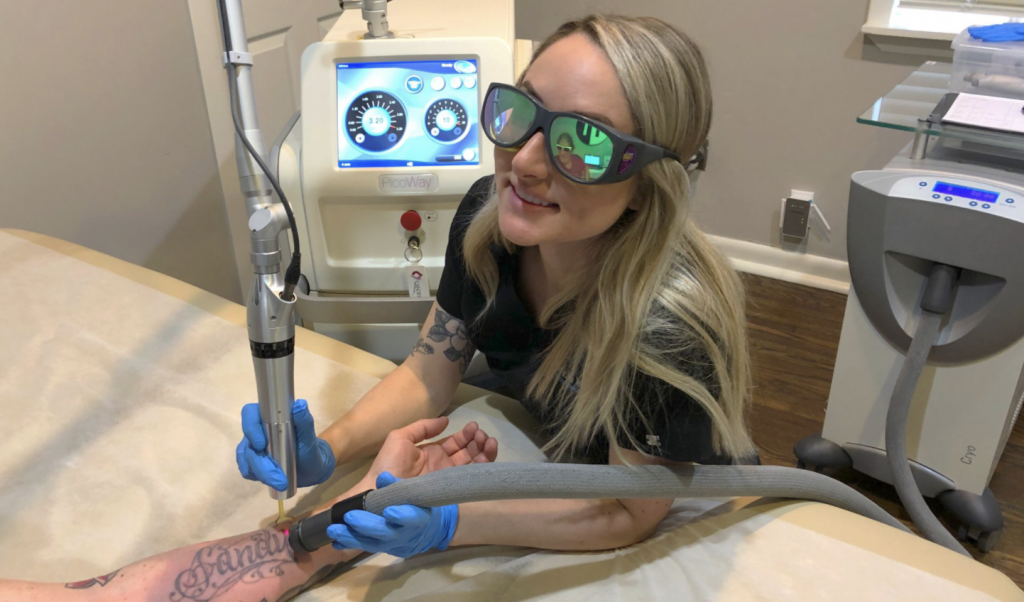Have you ever found yourself staring at that regrettable tattoo in the mirror? Some people may just let that unwanted ink fade away and ignore it, but others may look into tattoo removal procedures to get rid of that tat for good. Here are some things to consider when it comes to giving that tattoo the heave-ho, from the type of procedure to the costs of getting a fresh start.
Laser Tattoo Removal

Perhaps the most common way of getting rid of that unwanted tattoo is laser tattoo removal. Over multiple sessions, laser treatments will eventually fade the ink away. While it’s not complete removal, it’s the most readily accessible option for making that tattoo regret disappear. Tattoo removal centers like Fresh Start Laser Clinic provide cost-effective solutions to remove tattoos. With the use of Q-switched lasers, a tat is faded out with the energy of a strong pulse that heats up the ink in your skin to dissolve it.
Depending on your skin type and the size of the piece, your tattoo removal treatment will take a number of sessions to have the ink appear much less noticeable. Venues like Fresh Start Laser Clinic will offer a free consultation for laser tattoo removal treatments, letting you know how much the sessions will cost and an idea of how many sessions this may take. Keep in mind, this is a cosmetic procedure. Don’t anticipate health insurance to cover this.
What’s laser removal like?

Laser technicians will numb your tattooed skin with a local anesthetic before they begin the removal process. The skin may bleed, blister, and swell following each session. Depending on the age of the tattoo or the ink colors, different wavelengths may be necessary for a quicker fade. In general, laser tattoo removal takes six to eight sessions, with six to eight weeks between each appointment. Larger pieces or newer pieces will take longer, so be sure to monitor your spending accordingly.
With the potential for scarring and other skin conditions, a laser tattoo removal specialist will give specific aftercare instructions. Your technician will give you specific aftercare instructions. A technician will recommend an antibacterial ointment that needs to be applied to your skin daily for at least a week after each session.
This ointment is designed to help heal your skin and reduce the risk of infection. It’s also important to change the wound dressing each time you apply this cream. Be sure to keep this area clean and dry, and avoid exposing the area to any direct sunlight. Be sure to avoid picking at any scabs or blisters that may form near the tattoo removal site.
Other Forms of Tattoo Removal

Outside of laser removal, there are other ways to get rid of that unwanted tattoo. Surgical removal involves cutting off tattooed skin and stitching the remaining skin back together. This is an incredibly invasive method of tattoo removal, but it’s the only surefire way to have the tattoo completely removed. While this may get rid of any popular form of body art, it will leave a scar. Surgical removal is usually recommended for small tattoos.
Dermabrasion can also make that unsightly tat disappear, by using a sanding device to remove layers of skin to allow ink to leach out. This isn’t a very common option for tattoo removal, and its efficacy varies with each tattoo and each customer. If your skin type is very sensitive, or you suffer from a skin condition, dermabrasion is not the best idea. It’s also not recommended for anybody on body thinners because of bleeding and bruising. Be sure to do your research before opting for something other than an Astanza Trinity laser.




